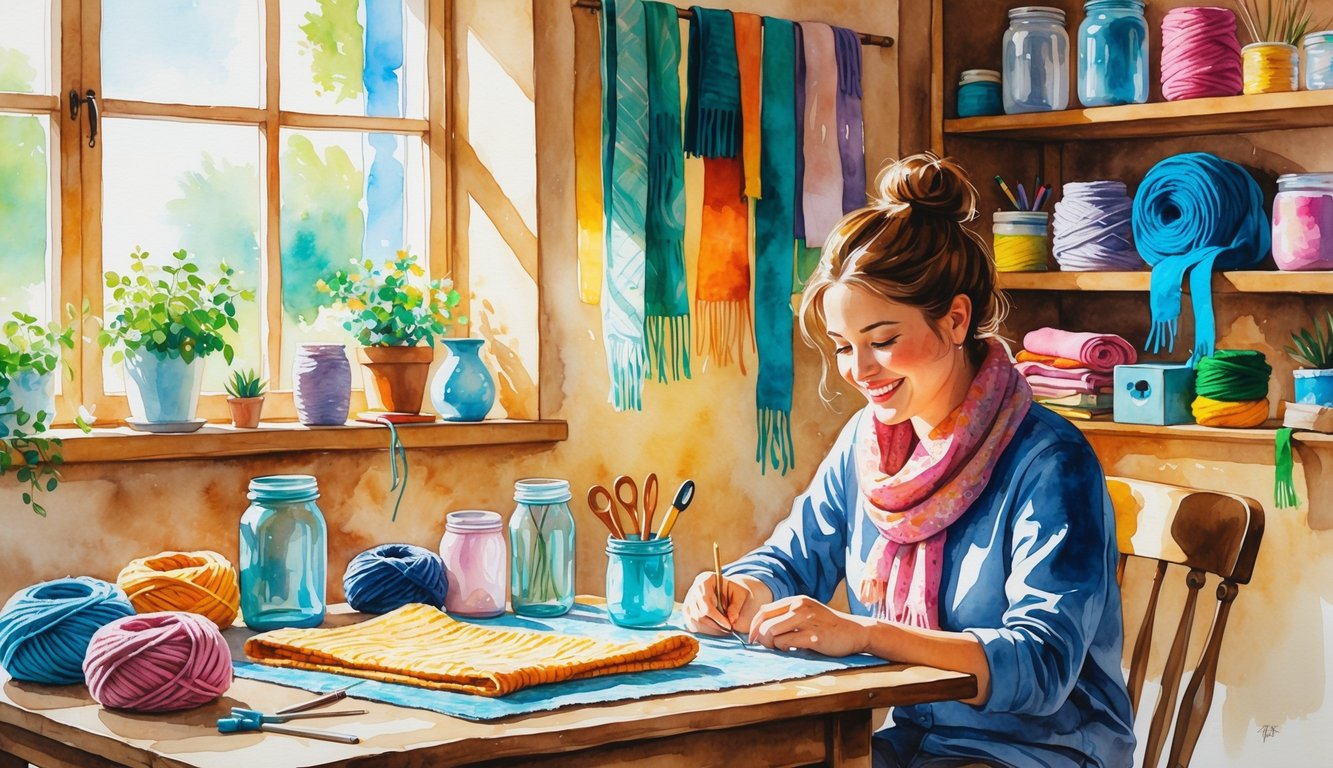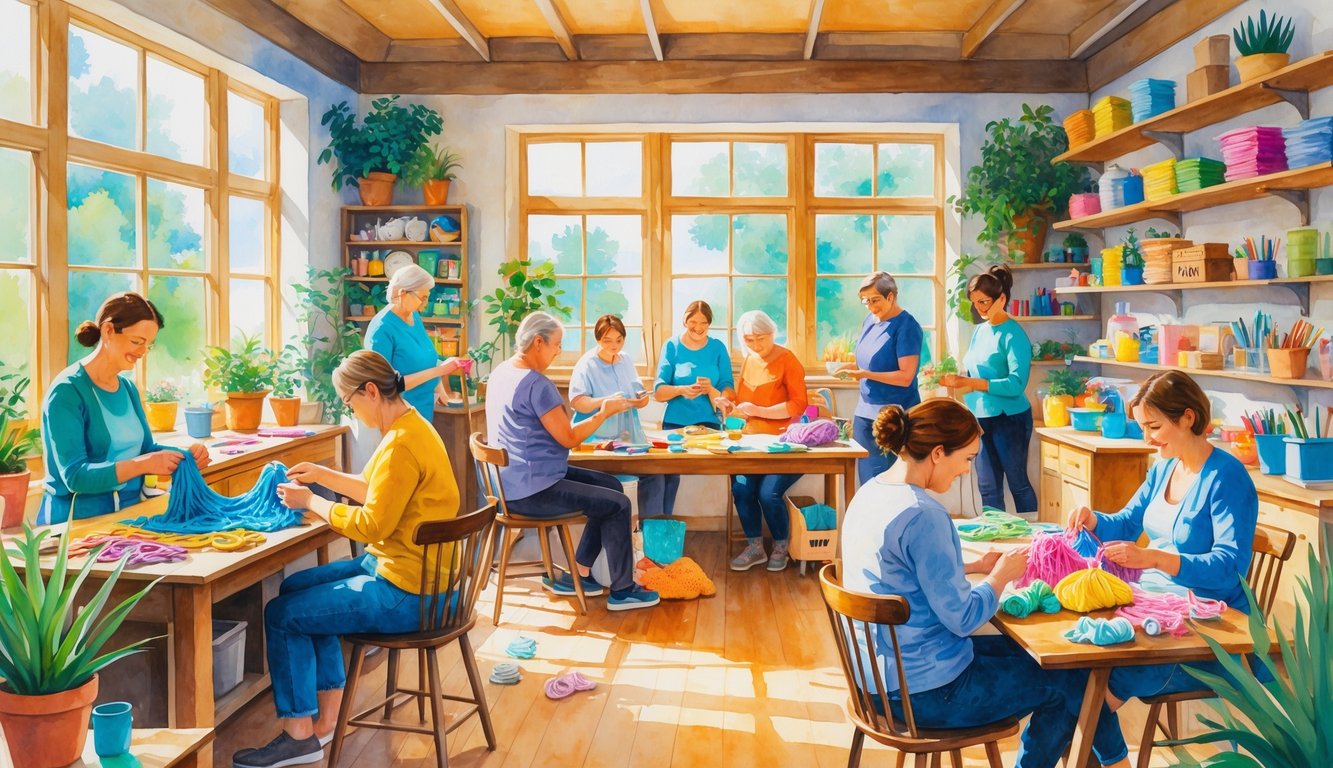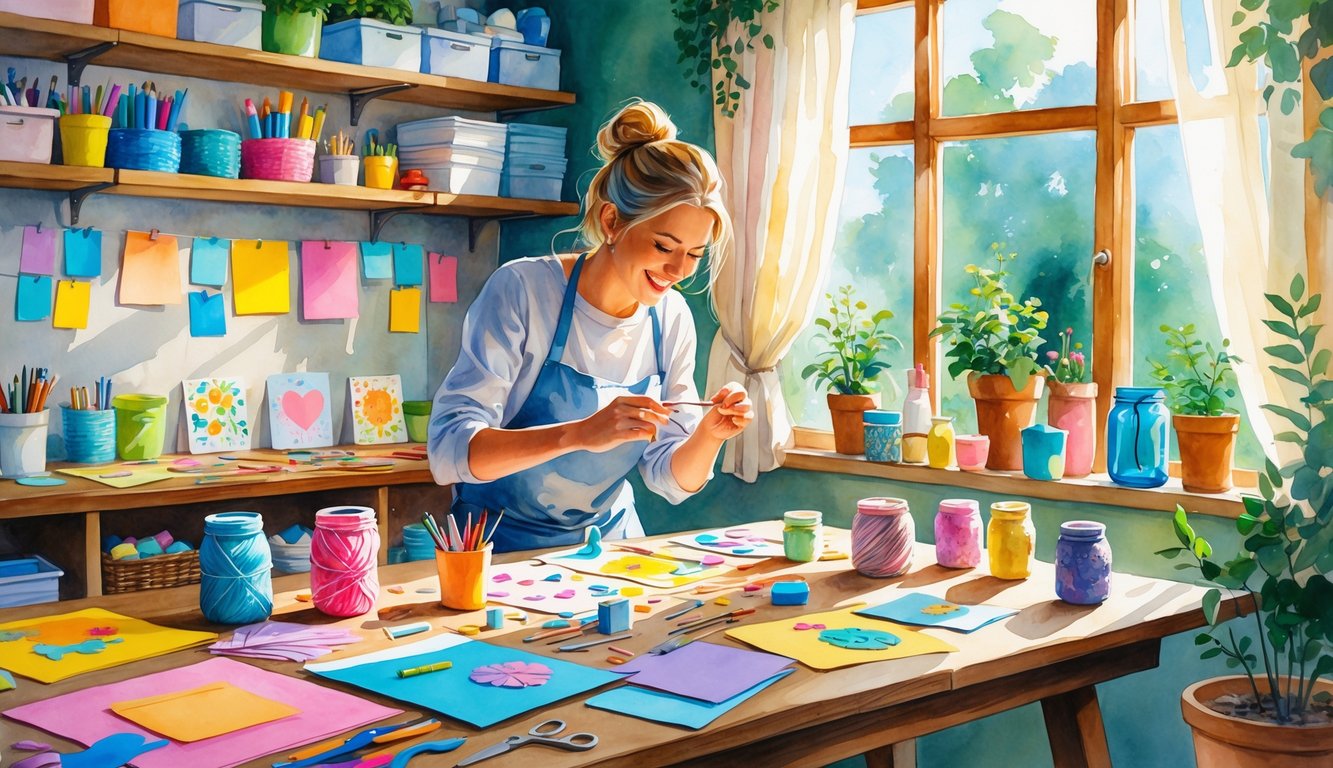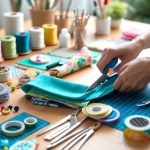
Okay, so apparently I’m not the only one who’s started hoarding empty jars and digging through the recycling for “craft supplies.” Is this a midlife crisis, or did the economy just quietly collapse behind my back? I don’t know. But every time I talk to friends, they’re bragging about how they haven’t bought real craft materials in months. They’re just grabbing whatever’s in the kitchen—glass, cardboard, old magazines, whatever—and calling it “statement décor.” Honestly, it’s got 2009 energy, except now there’s Pinterest and everyone pretends it’s aesthetic instead of desperate. I saw a Good Housekeeping survey (probably from someone’s aunt) that says these cheap habits actually stick better than the expensive, time-sucking DIY projects. Not sure if I buy it, but here we are.
And can we talk about candle wax? Why is leftover birthday candle wax suddenly the adult version of a spa day? My neighbor—she’s not even crafty—swears her teacup candles cost less than $5 and took less time than boiling pasta. DIY blogs (yeah, I read them, don’t judge) have been pushing this for years, but now even the workaholics I know are scheduling “craft breaks” instead of coffee. Is this just nostalgia for kindergarten, or is everyone broke and too embarrassed to say it?
Nobody’s pretending these crafts are flawless. In fact, half the point seems to be showing off the weird, lumpy stuff on Zoom calls. I mean, cardboard daffodils? Sure, why not. Nobody’s winning style points, but at least people finish these projects, which is more than I can say for that $80 macramé kit gathering dust. Would Martha Stewart be horrified? Yeah, probably. But my inbox is full of people asking for upcycling tips that don’t cost more than lunch.
Why Are Busy Adults Suddenly Obsessed With Cheap Crafts?

Saving money isn’t glamorous. Sometimes it’s just annoying. Sometimes it makes dinner taste weird because you used the last of the olive oil for a “paint pouring” experiment. I don’t know. But here I am, arguing with myself over which glue stick is less of a ripoff. It’s not about willpower. These habits just sneak in because life is relentless and budgets are a joke. There’s no secret. It’s just a constant, low-level struggle to not regret every single DIY fail.
The Weird Appeal of Being Cheap
Nobody brags about skipping the craft store, but saving $4 is still $4. You can buy baby wipes with that. Or pay for the streaming service you never watch. Mintel says 72% of Americans finished a craft last year. I don’t know if that means anything, but I do know YouTube and Michaels are everywhere, and their “easy” projects are basically gateway drugs.
I don’t use budgeting apps. I just look at the jam jar I turned into a pencil holder and call it a win. Experts go on about envelope budgets and “habit stacking.” Sure. But if you’re filling baskets at Dollar Tree, none of that matters. I keep hoping every $10 hack will save me $100. It never does. Still, I keep trying.
Honestly, half the thrill is using up the weird leftover yarn from three failed projects. Couponers say that’s the best part. I think it’s just guilt shopping, which is both practical and a waste of time. Ask any money expert.
The “I’ll Use It Someday” Lie
My shelves are a graveyard of “must-have” supplies for projects I never finished. The real cost isn’t the money. It’s the shame of seeing those bags of pompoms every time I need scissors. Michaels basically admits new crafters are overwhelmed, so now they push starter kits that won’t destroy your wallet.
I tried the envelope thing. Didn’t work. The only rule that sticks is “don’t buy anything until you use up half of what you already have.” The buy-stash-repeat cycle? It’s just clutter. Thrift shops have yarn for pennies, and Aldi randomly sells scrapbook paper if you’re lucky.
Nobody talks about emotional spending. I buy more gel pens because I can’t finish a single project. It’s not cute. But skipping a Michaels run feels rebellious, in a sad way. If you want to cut costs, the only real “hack” is using what’s already there, even if it’s ugly.
Priorities? What Are Those?
Here’s what’s wild: one tiny change, and suddenly I’m rethinking the whole budget. I read some 2025 industry report—don’t ask me why—that said adults now rank “making do” higher than “making new.” Maybe because 60% of people want “sustainable goods.” Or maybe everyone’s just tired of those credit card notifications after “just browsing” the craft aisle.
I stopped chasing every new gadget or fancy pattern, and honestly, I feel less guilty and more free. The whole “crafting for mental wellness” thing? I don’t buy it. Who relaxes while price-matching glue guns? I’d rather save the money for groceries or rent—stuff that won’t end up half-finished in a box under my bed.
People say this is just a phase. Maybe. But when my budget spreadsheet and my anxiety both improve, I’m not arguing. Cutting craft costs isn’t just smart. It’s survival. Satisfaction tastes weird, but at least it’s not glue (seriously, don’t eat glue).
How I Try (and Fail) to Start a Budget Craft Lifestyle

The receipts pile up, but the craft shelf looks emptier every season. I know I’m not the only one. There’s nothing like realizing you spent $75 on “eco-friendly” glue that’s still unopened, right next to the embroidery kit you bought in a moment of weakness. It’s always the little changes that mess up my plans or maybe (just maybe) actually help me stick to this budget craft thing.
Trying to Track Spending (Spoiler: I’m Bad At It)
Every time I try to track craft spending, I forget about the late-night dollar store runs. Glue sticks are supposed to last longer than two projects, right? No spreadsheet captures the $7 washi tape impulse or the Amazon “add-on” that’s just as useless as regular tape.
I asked a CPA for advice. She said, “Track every penny.” Sure. But how many receipts are lost under the couch? She recommended splitting spending into tools, consumables, and “miscellaneous dopamine purchases.” I can’t explain the bag of “vintage” buttons I bought on a whim.
I gave up on tables and printouts. Now I just snap a photo of every supply before checkout—future me’s problem. If you can’t see the leaks, you can’t fix them. That finance guy Ramsey says hobbyists underestimate their monthly craft spending by 40%. I believe it.



